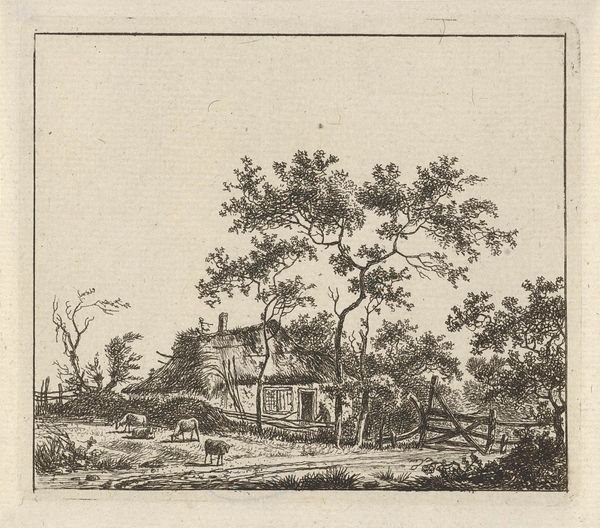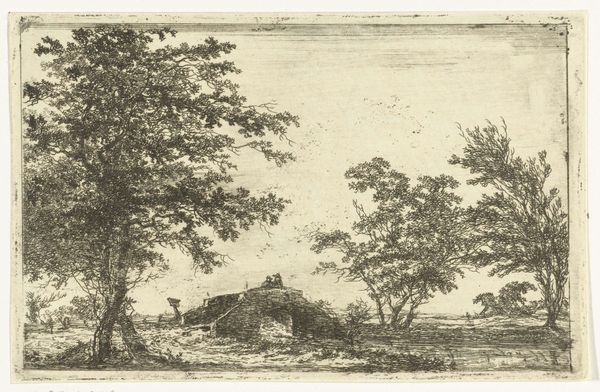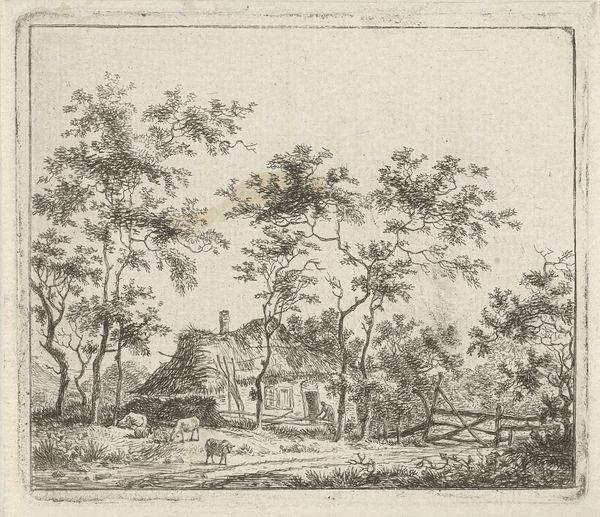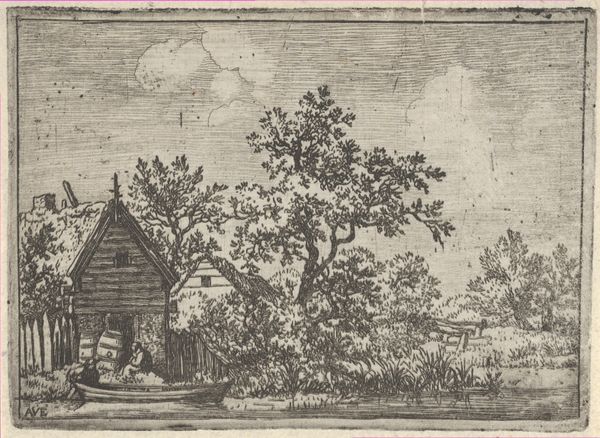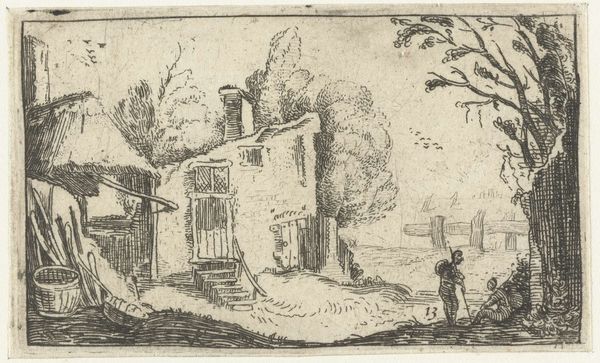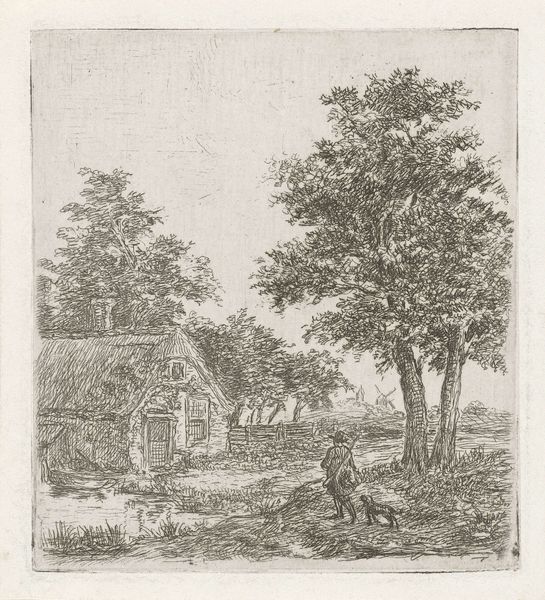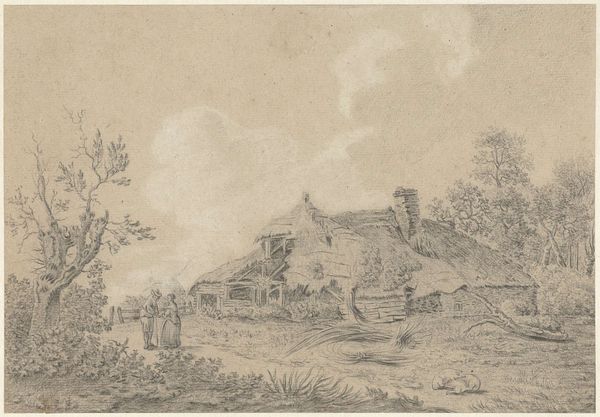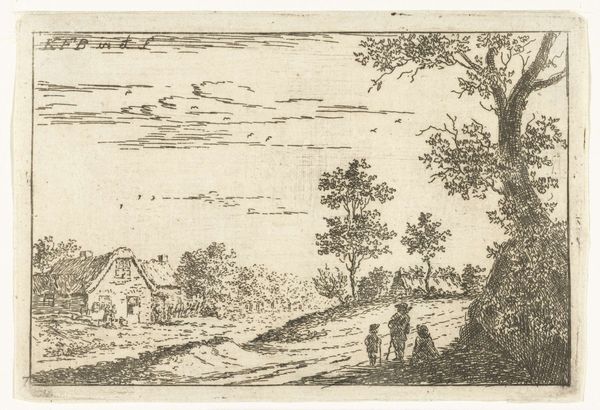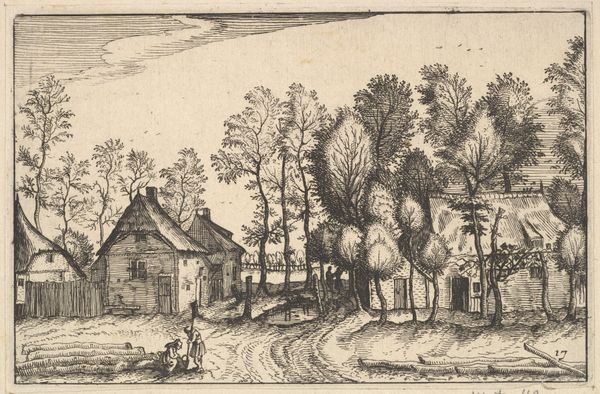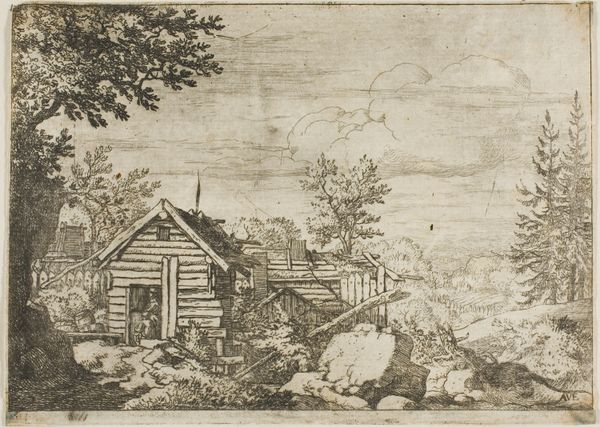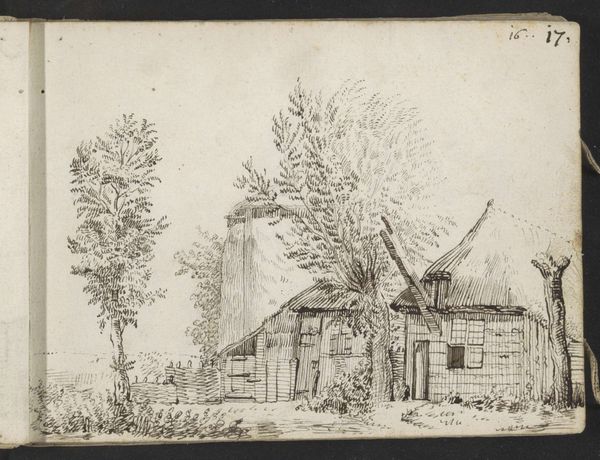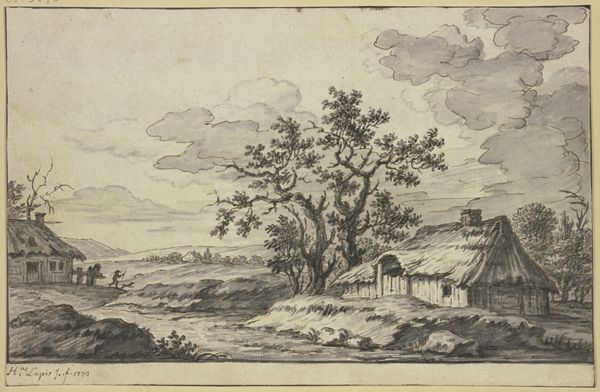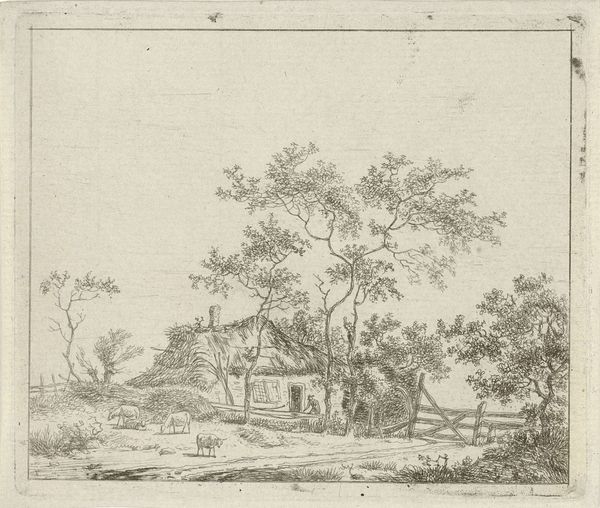
drawing, print, etching
#
drawing
#
baroque
# print
#
etching
#
landscape
#
etching
#
house
#
figuration
#
form
#
cityscape
#
genre-painting
#
history-painting
Dimensions: 8 3/16 x 6 15/16in. (20.8 x 17.6cm)
Copyright: Public Domain
Editor: Here we have Remigio Cantagallina's etching, "Three Figures by a Rustic Dwelling," likely created sometime between 1582 and 1656. I’m immediately drawn to the intricate detail in the building’s construction and the overall pastoral mood. What do you see when you examine this piece? Curator: The beauty here lies in understanding etching as a *process*. Look closely: the materials – the metal plate, the acid, the paper – each play a vital role. Cantagallina isn’t just depicting a scene; he's engaging in a specific, labor-intensive form of *production*. What impact do you think this particular printmaking method had on the work's availability and reception at the time? Editor: That's interesting. So, by being a print, was it more widely available compared to, say, a unique painting? Did that wider availability change how art was perceived or consumed? Curator: Exactly! The increased reproducibility changes the social context. Consider the Baroque era: etching allowed for the wider dissemination of imagery and ideas, blurring the lines between 'high' art for the elite and more accessible forms for a burgeoning middle class. Does considering it as a commodity change how we view the artist’s labor and skill? Editor: I suppose it does, especially when we think about how the printmaking process industrializes art production, if only in a rudimentary way. So, analyzing the material conditions gives us a completely different reading than thinking about it solely as a depiction of a rural scene. Curator: Precisely! By foregrounding process and materials, we unlock deeper meanings related to production, access, and consumption. We begin to understand art not just as an object of aesthetic contemplation, but as a product deeply embedded in a specific social and economic reality. Editor: That definitely offers a fresh perspective. Thinking about art as embedded in material conditions has changed how I understand Cantagallina’s work!
Comments
No comments
Be the first to comment and join the conversation on the ultimate creative platform.
